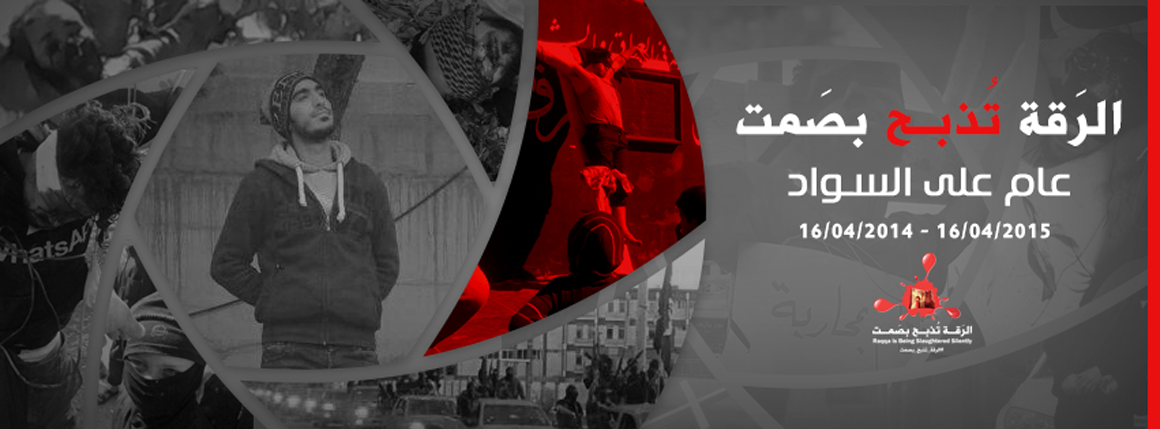An ISIS terrorist posing as an “asylum seeker” has been arrested by German police in a “refugee” center in Stuttgart, and German customs officers have seized boxes containing Syrian passports being smuggled into Europe.

According to a report carried by RTL’s German language service, the terrorist is a 21-year-old Moroccan using a “false identity” who had registered as an asylum seeker in the district of Ludwigsburg. He was identified after police linked him to a European arrest warrant issued by the Spanish authorities. He is accused of recruiting fighters for ISIS, where he acted as a contact person for fighters who wanted to travel to Syria or Iraq.
This first confirmed arrest of a bogus “asylum seeker” came simultaneously with the admission by a German finance ministry spokesman that “boxes” of fake Syrian passports, destined for sale and distribution to the hordes of nonwhite invaders seeking to settle in Europe as bogus “war refugees,” had been seized.
That news, carried in a report by the German Tagespiegel newspaper, also revealed that 10,000 fake Syrian passports were seized by police in Bulgaria, on their way to Germany.
The finance ministry official said both genuine and forged passports were in the packets intercepted in the post. Possession of these passports is a vital part of claiming “asylum” as “war refugees.”
The Tagespiegel also revealed that the fake Syrian passports are being sold for about $1,500 each—and the fact that many of the “refugees” can afford to buy multiple passports is yet another indication of the bogus nature of their claims to be “asylum seekers.”
Significantly, the Tagespiegel article continued, “It is not only Syrians who are interested in Syrian passports. Refugees from Iraq, Afghanistan, and Pakistan want to become Syrian in order to secure their recognition as asylum seekers in Western Europe. According to press reports, nine out of ten refugees who came from Macedonia to Serbia claimed they were Syrians.”
The trade in fake Syrian passports was also confirmed by the head of the EU frontier police, Fabrice Leggeri, in a recent interview with the Europe 1 TV station.
Leggeri told Europe 1 that the trade in fake Syrian passports originated in Turkey. “There are people who are now in Turkey, buying false Syrian passports because they have obviously realized that it is a windfall since Syrians get asylum in all Member States in the European Union,” he said.
“People who use false Syrian passports often speak in Arabic. They may originate in North Africa or the Middle East, but have the profile of economic migrants.”
*** Second Tactic
Muslim Migrants Converting to Christianity to Improve Asylum Chances
Hundreds of Iranians and Afghanis have been baptised at Trinity Church, a Lutheran church in Berlin, where Pastor Gottfried Martens offers a three-month “crash course” for new converts.
AP reports on one baptism where Martens asked Iranian refugee Mohammed Ali Zonoobi: “Will you break away from Satan and his evil deeds? Will you break away from Islam?” To which Zonoobi fervently responded: “Yes”.
Martens then baptised him “In the name of the Father, Son and Holy Ghost.” Mohammed renamed himself Martin.
Martin Zonoobi, a carpenter from Iran, arrived in Germany with his wife and children five months ago. He is one of many who have converted, with many claiming true belief has prompted them.
However, Pastor Martens admits that some convert just to improve their chances of winning asylum in Germany – as Christians who have apostatised from Islam they are likely to suffer heavy persecution if they are sent home.
Martens says motive is not important, however. “I know there are – again and again – people coming here because they have some kind of hope regarding their asylum,” he said.
“I am inviting them to join us because I know that whoever comes here will not be left unchanged.”
Many are so taken by the Christian message that they end up genuinely changing their beliefs anyway, Martens says. He adds that of those who have converted, only around one in ten stop attending church afterwards.
Although being Christian alone does not mean they will automatically win asylum – Merkel has even said that Islam “belongs in Germany” – many hope this will be enough to sway authorities.
None will openly admit converting just for asylum purposes as it could lead to them being deported as Christian coverts, possibly facing the death penalty when they return home.
Martens’s church is now reporting a surge in the congregation from 150 two years ago to more than 600 now. Some of the migrants coming to be converted are travelling from places as far afield as Rostock on the Baltic coast.
There no official figures on how many Muslims have converted to Christianity in Germany over the past few years, and the number is still tiny compared to the country’s four million strong Muslim population. Nonetheless, Martens describes the rate of conversions as a “miracle”.
He also claims to have at least 80 people, mostly migrants, waiting to be baptised.
Zonoobi’s wife Afsaneh, now known as Katarina, said the Christening marks a new beginning.
“Now we are free and can be ourselves,” she said.
“Most important, I am so happy that our children will have a good future here and can get a good education in Germany.”
*** Third Tactic
Since 2013, human smuggling of Syrians and other Middle Easterners into is viable industry
With The Help Of Smugglers, Syrian Refugees Sneak Into Europe
The 27-year-old Syrian, who once smuggled arms for Syrian rebels, is now waiting in Istanbul for a human smuggler to get him to Europe. He says his name is Mohammed. He does not offer a second name. He will go by air, he says, the safest route. He has paid a smuggler more than $8,000, and he’s sure he will get to Austria.
In the past week, he connected seven friends with smugglers.
“I know that most of them made it,” he says, with a tight smile. He is traveling light. Everything he owns is in a backpack.
“I am leaving Syria under a lot of pressure,” he explains.
He seems exhausted by the waiting. Twenty days ago, he got into a fight with an al-Qaida-linked group while helping a friend in the Syrian town of Sarqib. Mohammed says he killed two of their men.
“I needed to leave Syria because I was facing death,” he says.
He joins a surge of Syrian refugees smuggled to Europe. Many are from Syria’s educated, professional class, and have the means for the underground routes. The preferred destination is northern Europe, where economies are strong and the Syrians believe they can start over again.
The numbers seeking asylum in European Union countries doubled this year to more than 36,000, according to EU officials. The journey is long, but the travel is safe, depending on how much you are willing to pay.
Air routes are top of the line. The price tag for Sweden, the most desired destination, is $16,000.
The most dangerous route is by sea, where smugglers sell space on overcrowded fishing boats. The Italian coast guard recently rescued 120 mostly Syrian refugees off the Italian coast. In October, 30 Syrians drowned in a shipwreck between Malta and Italy.
More than 2 million Syrians have fled their homeland since Syria’s civil war broke out more than two years ago. Most have resettled in neighboring countries, including Lebanon, Jordan and Turkey.
Many believed it was a temporary move. But as the war grinds on, some Syrians are making a different calculation. There may be nothing to go home to for years.
Negotiating The Best Deal A Matter Of Life And Death
Over the past several months, the Syrian exodus has increasingly focused on Europe. For many, the journey starts in Turkey, where the human smuggling trade has long flourished.
In the Fatih district of Istanbul, past an outdoor market and down a narrow alley, the tea houses and kabob shops caters to Syrian refugees.
The menus are in Arabic, and so are the conversations. This is the place to make contact with a smuggler and begin the negotiations over price and destination. The tables are full. Syrian men drink sugary tea and swap stories about the best routes and prices.
Abdel Ghani, a medical technician from Qamishli, in northern Syria, sold his house to finance his trip. He’s on his third try.
“It becomes an addiction. I would try 100 times,” he says and shakes his head and laughs at his latest failed attempt. His smuggler got him a fake Swiss passport, but the birthdate made him 20 years older than his actual age.
He grew his beard, tried to stick out his lip like the man pictured in the passport. He made it to the Istanbul boarding gate before his documents were spotted as fakes.
He watched other Syrian families with fake passports board the plane. His documents were confiscated, but he wasn’t detained.
“I’m going to try again the day after tomorrow. I hope to get to Sweden,” he pledges.
Another Syrian at the table, a real estate agent before the revolt, says he sold everything he owned, and paid a smuggler $35,000 to get his wife and daughters to Germany. The trip took four months to arrange. He interviewed more than one smuggler.
“I had to pick a smuggler for my kids; it’s a matter of life and death,” he says, noting that his family arrived safely in Germany a month ago. “We got the right smuggler.”
Every part of a smuggled trip is a matter of luck. Hiring the right smuggler is only the first hurdle; getting into Europe is just the beginning of the journey.
There’s been a surge in the number of Syrians arrested in Romania, Macedonia and Bulgaria. Thousands of Syrian refugees are languishing in Greek detention camps. These are the perils of the route to northern Europe that begins with an air ticket, but usually involves trains, buses and sometimes a final border crossing on foot.
As Demand Rises, So Do Prices
A smuggler, who gives his name as Abu Salman, doesn’t want to talk in the restaurant. He invites us to a shabby hotel lobby next door. He’s in his 50s, wearing a frayed gray suit. He says he owned a successful restaurant in Syria before the revolt. Now, his trade is in people.
“There are Turks we’ve been working with; there is a relationship of trust,” he says.
Since February, Abu Salman says he has arranged for more than 500 Syrians to get to Europe. Most made it, though 150 are still stuck in Bulgaria.
As he explains the business, his cell phone rings. His cousin is calling from the Netherlands, where he just arrived.
“There was a delay of a month,” explains Abu Salman. His cousin had to spend time in Bulgaria and Serbia before finally getting to the Netherlands. The delays add to the cost. But this still counts as a success. Abu Salman is building a reputation.
“People are starting to call me from Syria, ‘Please make all the arrangements,’ they say,” according to Abu Salman.
The prices are rising as the demand grows.
“It used to be $6,000 for a boat to France,” he says. Now it’s $10,000, and some smugglers are asking for more. But desperate Syrians continue to sell everything they have and pay whatever it takes.





